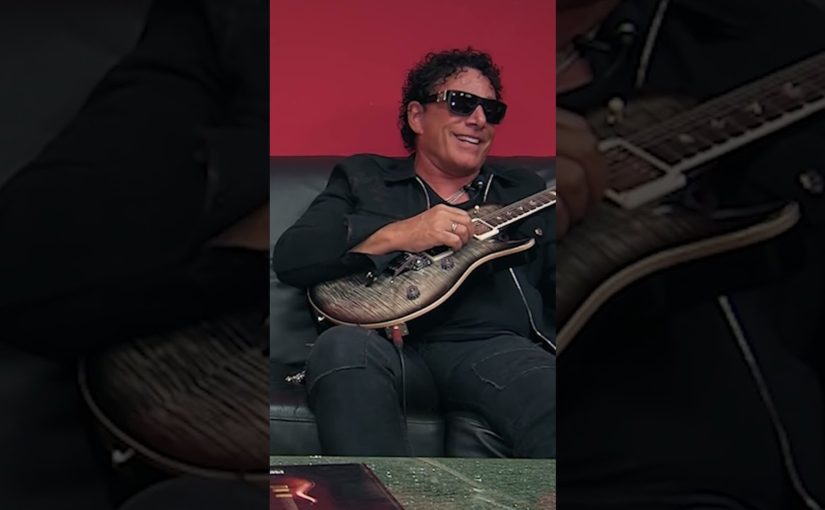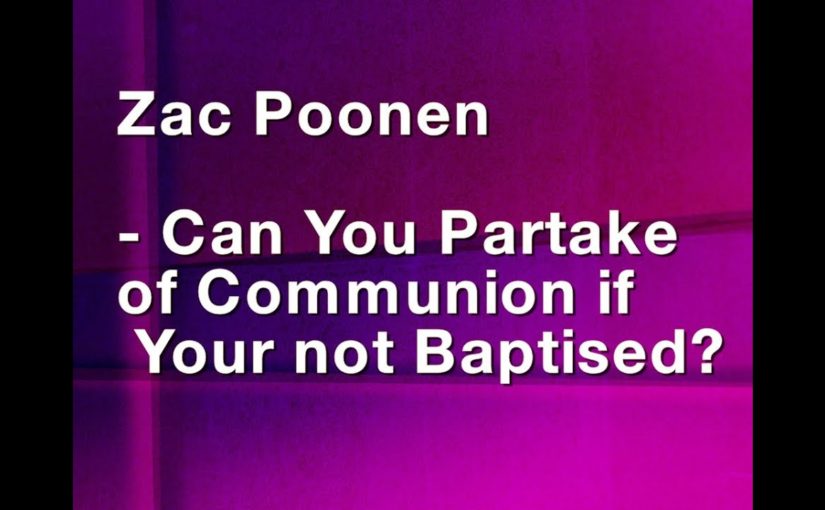Why does it seem like you
spend most of your time in bed, lying down, and not doing much lately? Are you someone who easily gets tired and doesn’t feel like doing anything? Do you label this kind of
behavior as mere laziness and nothing more? There’s a lot of overlap between laziness and burnout that can make it difficult to
differentiate between the two. Burnout is a negative state of emotional, physical, and mental exhaustion, caused by excessive stress
and the inability to cope with it. As of 2010, a survey reported that approximately 75% of adults
in the United States alone have experienced symptoms of burnout, with over 40% of cases being more severe. Now, more than ever, it’s
become imperative to educate and better understand
the nature of burnout. So with that said, here
are six telltale signs that what you’re experiencing right now isn’t laziness, but burnout. (upbeat music) Number one, you feel
disconnected from everything. Are you going through
the motions of every day as if on autopilot? Is there a persistent feeling of being detached from yourself? If you’re suffering from burnout, one of the things you
might be experiencing, but don’t quite realize or
understand is depersonalization. People experiencing depersonalization, most commonly those
struggling with trauma, report feeling a strange
sort of emotional numbness or emptiness as if they were watching life from outside of themselves. They don’t feel like themselves anymore. They don’t feel engaged by anything. And they constantly struggle
with the overwhelming sense of helplessness and inability
to take back control of their lives. Number two, you used to be motivated. Laziness is a character trait. And character traits tend
to remain stable over time. A lazy person doesn’t ever
feel like exerting effort or applying themselves to things. But if you used to be self-motivated and high achieving, often excelling in certain areas, and have only recently become exhausted, apathetic, and unmotivated, then it’s more likely that
you’re suffering from burnout and not laziness as
most people would think. Number three, you used to be passionate. A clear difference between
someone who’s burnt out and someone lazy is that the former used to have things they
were passionate about, but may now be struggling to find interest or enjoyment in anymore. Whether it’s a talent, a sport, or just your academic, or professional performance in general, burnout can make it hard for you to do the things you once
loved or felt passionate about. You might even come to hate or resent it because of how much
you overworked yourself and pushed yourself to
the brink because of it. Ouch. Number four, you’ve become
moody and irritable. Do you suddenly find yourself
snappy and easily irritated? Do you often feel emotionally
out of control nowadays and don’t know why? Moodiness and irritability are common, but often overlooked signs of burnout. So if you start to have trouble
controlling your emotions, especially when it never
used to be a problem for you, this might be the reason why.

Lazy people on the other hand
are a stark contrast to this, because they’re often
very relaxed, laid back, placid, and unaffected by things. Number five, you’ve
neglected your self-care. One of the most distressing warning signs that someone may be emotionally
and physically burnt out is if you start neglecting yourself and socially withdraw from others. There are concerning
changes in your eating and/or sleeping patterns. You stop making an effort to
groom yourself or look good, and you tend to spend most of your time by yourself doing nothing because you’re so easily exhausted by even the simplest of tasks. The difference between
being burnt out and laziness is starkly in the fact that
you weren’t always this way. And number six, these
changes happened gradually. Finally, but perhaps most importantly, something you should know about burnout is that it develops in stages. So all of the points mentioned before; losing interest and motivation, especially in things we used to love, feeling detached from yourself and disconnected from
everything around you, socially withdrawing, and
neglecting your self-care, won’t just happen overnight. Studies show that there are five major stages of burnout, each with increasing degrees of severity. The honeymoon phase is the onset of stress, chronic stress, burnout, and habitual burnout. Many people begin to experience symptoms as early as the second phase, when there is still a
moderate amount of stress, but optimism, interest,
motivation, and performance, may already start declining. And by the time you reach
the fifth and final stage, burnout has already become
so embedded in your life that the persistent mental
and physical fatigue becomes more intense and harder to treat; making you more vulnerable to developing depression and anxiety. Spotting the signs of burnout early makes it all the
easier for you to get help and recover from it. That’s why it’s so
important to raise awareness about burnout instead of simply
dismissing it as laziness like most people tend to do. So if you or anyone
you know maybe suffering from mental or emotional burnout, please don’t hesitate to reach out to a mental health care professional today and talk to them about it. If you find this video helpful, be sure to hit the like button, feel free to leave a comment
down below with your thoughts, experiences, and suggestions, and share it with those out there battling the haze of burnout. Don’t forget to subscribe, just go and hit the notification
bell from one new video. And as always, thanks for watching. (upbeat music).
As found on YouTubeꜱʟɪᴍᴄʀʏꜱᴛᴀʟ The World’s Only Slimming Crystal Water Bottles! The unique combination of crystals is so powerful that it has been used for decades by crystal healing experts to help thousands of men and women change their lives for the better ➯➱ ➫ ➪➬ ᴛʏᴘᴇ ᴏʀ ᴘᴀꜱᴛᴇ ʏᴏᴜʀ ᴄᴏɴᴛᴇɴᴛ ʜᴇʀᴇ [Official] ᵘᵖᵗᵒ ⁷⁰% ᵒᶠᶠ ᵗᵒᵈᵃʸ!


 Lazy people on the other hand
are a stark contrast to this, because they’re often
very relaxed, laid back, placid, and unaffected by things. Number five, you’ve
neglected your self-care. One of the most distressing warning signs that someone may be emotionally
and physically burnt out is if you start neglecting yourself and socially withdraw from others. There are concerning
changes in your eating and/or sleeping patterns. You stop making an effort to
groom yourself or look good, and you tend to spend most of your time by yourself doing nothing because you’re so easily exhausted by even the simplest of tasks. The difference between
being burnt out and laziness is starkly in the fact that
you weren’t always this way. And number six, these
changes happened gradually. Finally, but perhaps most importantly, something you should know about burnout is that it develops in stages. So all of the points mentioned before; losing interest and motivation, especially in things we used to love, feeling detached from yourself and disconnected from
everything around you, socially withdrawing, and
neglecting your self-care, won’t just happen overnight. Studies show that there are five major stages of burnout, each with increasing degrees of severity. The honeymoon phase is the onset of stress, chronic stress, burnout, and habitual burnout. Many people begin to experience symptoms as early as the second phase, when there is still a
moderate amount of stress, but optimism, interest,
motivation, and performance, may already start declining. And by the time you reach
the fifth and final stage, burnout has already become
so embedded in your life that the persistent mental
and physical fatigue becomes more intense and harder to treat; making you more vulnerable to developing depression and anxiety. Spotting the signs of burnout early makes it all the
easier for you to get help and recover from it. That’s why it’s so
important to raise awareness about burnout instead of simply
dismissing it as laziness like most people tend to do. So if you or anyone
you know maybe suffering from mental or emotional burnout, please don’t hesitate to reach out to a mental health care professional today and talk to them about it. If you find this video helpful, be sure to hit the like button, feel free to leave a comment
down below with your thoughts, experiences, and suggestions, and share it with those out there battling the haze of burnout. Don’t forget to subscribe, just go and hit the notification
bell from one new video. And as always, thanks for watching. (upbeat music).
Lazy people on the other hand
are a stark contrast to this, because they’re often
very relaxed, laid back, placid, and unaffected by things. Number five, you’ve
neglected your self-care. One of the most distressing warning signs that someone may be emotionally
and physically burnt out is if you start neglecting yourself and socially withdraw from others. There are concerning
changes in your eating and/or sleeping patterns. You stop making an effort to
groom yourself or look good, and you tend to spend most of your time by yourself doing nothing because you’re so easily exhausted by even the simplest of tasks. The difference between
being burnt out and laziness is starkly in the fact that
you weren’t always this way. And number six, these
changes happened gradually. Finally, but perhaps most importantly, something you should know about burnout is that it develops in stages. So all of the points mentioned before; losing interest and motivation, especially in things we used to love, feeling detached from yourself and disconnected from
everything around you, socially withdrawing, and
neglecting your self-care, won’t just happen overnight. Studies show that there are five major stages of burnout, each with increasing degrees of severity. The honeymoon phase is the onset of stress, chronic stress, burnout, and habitual burnout. Many people begin to experience symptoms as early as the second phase, when there is still a
moderate amount of stress, but optimism, interest,
motivation, and performance, may already start declining. And by the time you reach
the fifth and final stage, burnout has already become
so embedded in your life that the persistent mental
and physical fatigue becomes more intense and harder to treat; making you more vulnerable to developing depression and anxiety. Spotting the signs of burnout early makes it all the
easier for you to get help and recover from it. That’s why it’s so
important to raise awareness about burnout instead of simply
dismissing it as laziness like most people tend to do. So if you or anyone
you know maybe suffering from mental or emotional burnout, please don’t hesitate to reach out to a mental health care professional today and talk to them about it. If you find this video helpful, be sure to hit the like button, feel free to leave a comment
down below with your thoughts, experiences, and suggestions, and share it with those out there battling the haze of burnout. Don’t forget to subscribe, just go and hit the notification
bell from one new video. And as always, thanks for watching. (upbeat music).





